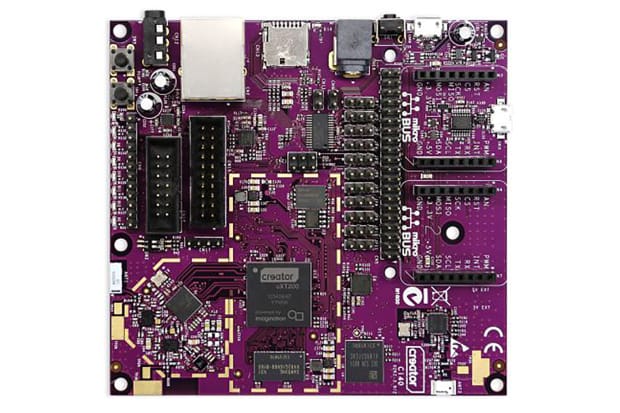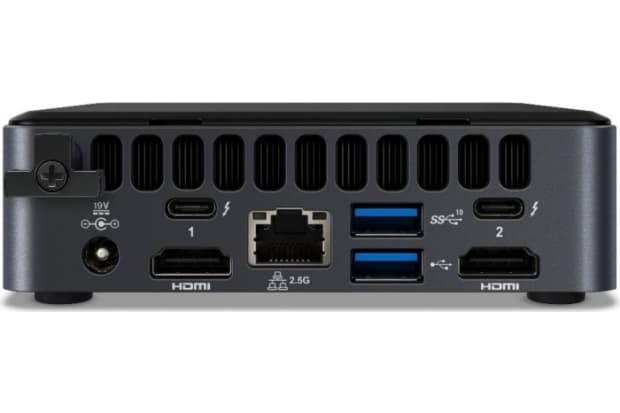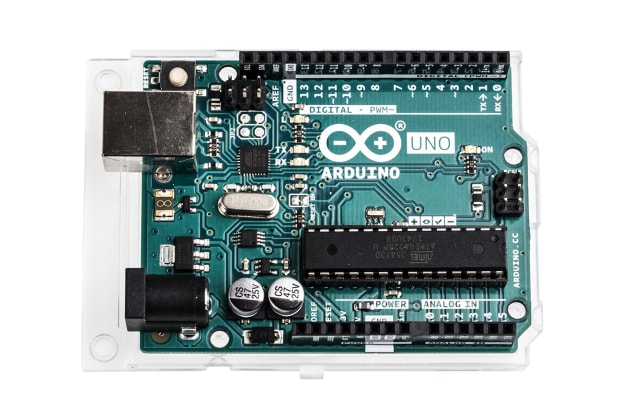- Published 16 Jun 2023
- Last Modified 29 Aug 2023
- 10 min
Guide to Single Board Computers
Single board computers are simpler, more robust, and easier to program than their more complex counterparts. Find out more about their uses.

Single board computers are common in schools, laboratories, homes and computer clubs. They are a cheap way to learn coding and useful things like robotics. Compact, efficient, and highly reliable, these computers are important for automation, monitoring and controlling equipment, security and surveillance, military applications, and many other applications in industry where a simple yet rugged board is needed.
These devices are typically used with backplanes, which allow a single board computer to be easily connected to systems and in a very compact arrangement.
Here’s our look at what they are, how they work, and how to choose one.
What is a Single Board Computer?
Single board computers are computers mounted on a single board. In this case, the board is a circuit board, and the computer is a range of components - microprocessors, memory, and input/output.
A single board computer is differentiated from a desktop or personal computer not by what it can do, but by its design. A single board computer has all elements of a complete computer contained within one circuit board. Conversely, desktop computers have motherboards with slots for the essential components of the computer. On a desktop computer, the processor, memory, storage, input and output devices, and other basic components attach via sockets on the motherboard. On a single board design, everything is self-contained.
Single board computers also have different capabilities than desktop computers. On a desktop computer, adding capability to the motherboard is typically accomplished by plugging a peripheral device into a slot on the motherboard. A high-end video card, for instance, will be plugged into a specialised slot on the motherboard. On a single board computer, this and the other components required are simply part of the circuit board. The device is ready to be used as it is.
Single board computers come in a huge range of different capacities. Because some of them are used to control straightforward processes, some single board computers are very slow and limited compared to the average desktop computer.
Over the past 10 years, there has been a healthy growth of single board computers. They’re small, inexpensive, and cheap to run, but that doesn’t mean they are slouches in performance. A machine in the £50–£100 range will provide a user experience roughly equivalent to a standard desktop PC from 15 years ago. However, you can now expect a 4K display on many models, which would have been unthinkable then.
How Do Single Board Computers Work?
Essentially, single board computers work in much the same way as desktop PCs. There’s a motherboard, processor, RAM, power system, graphics and sound chips, and various connectors to peripherals like routers, USB devices, modems, monitors, speakers, mice and keyboards. Data storage tends to be in the form of a removable device like an SD Card, which will usually also contain the operating system, although some have permanent built-in storage too.
Best Single Board Computer

Declaring the best single board computer would be like deciding between Windows, iOS or Android – it’s largely down to what you want to pay, how powerful you want it to be and what you need it for. Even things like physical size, delivery times and age might come into the equation.
What to Consider When Purchasing an SBC
Because single board computers are used in some very trying environmental conditions, it's paramount to ensure that any design chosen can provide reliable service under the expected stresses. Minimum and maximum operating temperatures, the size of the device, the type of sockets it has, and other factors will all play into whether or not it is suitable for any particular application.
While single board computers are inherently less flexible than multi-board designs as far as expandability is concerned, the options for single board computers with many different expansion slots are rapidly increasing. In addition to this, there are many very specialised designs available, providing very powerful solutions for embedded applications where space is at a premium.
Single board computers will typically not have the upper range of performance of desktop computers, but they are getting very powerful with modern developments. Options such as the BeagleBoard, Raspberry Pi, and others also make them very accessible, allowing a developer to get an entire computer on a very small circuit board that can be easily expanded for the purposes of building a practical appliance or simply experimenting. As is the case with most electronics, the price of single board computers has dropped over time even as capabilities have expanded.
Single Board Computer Uses
Single board computers are frequently employed in embedded applications. An embedded computer cannot be expanded upon and contains only the input and output capabilities it needs for the task for which it is designed. For example, a vending machine might have a built-in single board computer to control the functions of the vending machine, but there would be no provision to add more hardware to the computer to expand its capabilities.
Single board computers are often plugged into a backplane. The backplane allows input and output devices to be attached to the computer. Single board computers are frequently used in rack systems, which allows reliable and fast integration into a system.
Although single board computers could technically perform some office tasks, they don’t tend to be used in that way as there could be issues with supporting some mainstream office software suites, especially those at the lower end of the price range. However, they are used in industry, whether it’s simply as a cheap way to control programmable machinery or even to run a basic server.
Perhaps the main use today is in education and experimentation. Because they’re cheap, a whole class can be kitted out with the devices. They can be used to learn to program, whether it’s Scratch or a more advanced language, or to learn things like robotics or 3D printing. They find their way into the home, too, whether it’s just for tinkering or setting up home projects like Internet of Things applications or home networking.
Industry and business applications often use single boards for security or basic controllers. Due to their simple nature, they can be designed to be rugged as well as small enough to be easily and quickly replaced. They can also be used as controllers for large industrial machinery. The military uses them often in specialist tablet computers, drones, or for controlling surveillance systems.
Why Single Board Computers are Used in Industry
Single board computers have all the capacity required to perform most automation tasks and specialised designs are widely available. These computers have some significant advantages over using a typical desktop computer for the applications to which single board computers are usually put.
Single board computers are very small. This allows them to be embedded in devices where space is limited. The computers are also very efficient, giving them an edge in power saving. In addition to these advantages, single board computers are self-contained, making them very reliable under trying environmental conditions.
Despite the fact that single board computers typically have less capacity than multi-board computers, they are often more expensive. Single board computers are specialised equipment, which means they are not manufactured in the same quantities as standard multi-board motherboards. The reliability of these computers, however, makes them very cost-effective solutions for industry. Additionally, because they are self-contained, it is relatively easy to swap one out for the other if a computer needs to be replaced.
Various backplane options allow these computers to be expanded tremendously in their capabilities, so they are not overly limited by their designs. In fact, with certain types of backplane arrangements, single board computers can actually provide more expanded capacity than a standard multi-board computer and in a much more compact amount of space.
Types of Single Board Computer
There are many types of single board computers available. The most common types are those designed for backplane connections. These come in designs that work with various architectures, including Intel architectures and others. These designs include PXI, VXI, and CompactPCI types, all widely available.
There are lots of manufacturers on board with this technology nowadays, so here are some of the most popular brands on the market.

Intel Single Board Computer
Intel, most famous for its CPUs, has produced a series of high-performance single-board computers. These really are viable replacements for desktop PCs, since you can install Windows or Linux, and they come with quad-core GPUs, professional cases and full connectivity out of the box. They’re not really for hobbyists and come at a price that’s reflective of the quality. These can be used in the office setting or even for gaming.

Raspberry Pi
Raspberry Pi is probably the best-known manufacturer of single-board computers, and you’ll find them in all sorts of places, from schools and colleges to labs and industrial applications. They’re also very affordable, and there’s a constant supply of new models to keep up with technology. One advantage of the Raspberry Pi is simply that – they are so ubiquitous that users often won’t have to take too much time to learn how to use them if they’ve already had experience. Teachers and instructors are also familiar with them, which makes them ideal for the classroom setting.

Arduino
Arduino has a similar proposal to Raspberry Pi, in that the company makes affordable, small and expandable single board computers. However, both the hardware and the software are open source, which does help to keep costs down – it runs on the Xinu operating system and can be programmed using C and C++. The OS could lead to some compatibility issues if they are intended to be integrated with more mainstream systems, but these basic machines tend not to be used for professional applications as such – they’re ideal for learning to code and running machinery or novelty applications with, so they’re great for kids but are a cheap way of running professional machinery too if you have the know-how. And when you’re paying as little as £20, you can afford to really experiment with an Arduino.
Specifications
Single board computers can be purchased to meet a variety of needs. Some of them come with I/O interfaces geared toward audio applications, networking applications, wireless applications, etc. Being able to purchase these devices already set up for such uses makes them even more convenient.
While single board computers are generally differentiated from multi-board computers by having all of their components installed on a single board, some come with expansion slots. These expansion slots include popular designs such as microSD, Mini PCI, PCI, ISA, PCI Express, and others. They can also be purchased based on the specific type of port they come with, such as CRT, DVI, HDMI, VGA, etc.
Where the basics are concerned, the specifications are very similar to what you would assess if purchasing a desktop computer. Processor clock speed, front-side bus clock speed, the type of processor used in the device, the amount of memory it can support, and other considerations are all taken into account when choosing these devices. Because many of them are used in such simple applications, purchasing single board computers with comparatively low power versus a desktop is quite often a viable means of saving money.